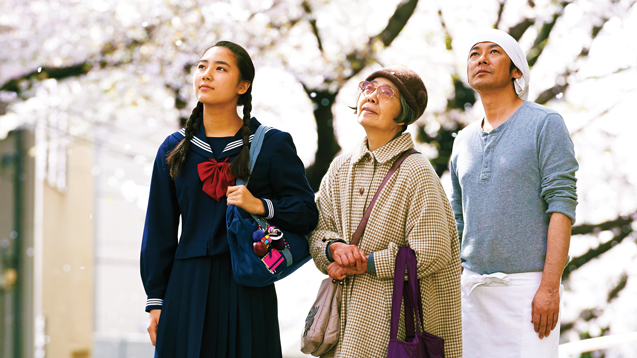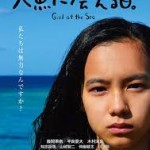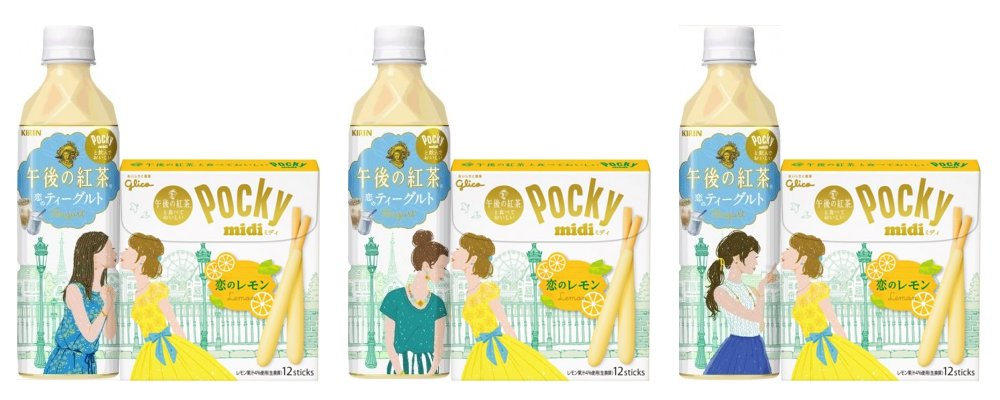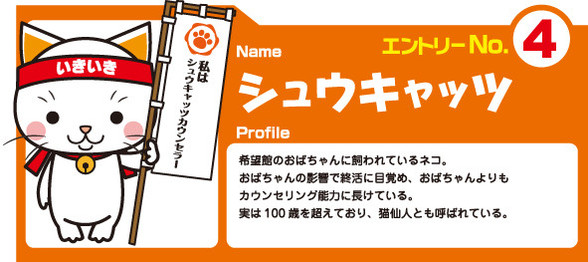WIT Life #298: Sake production and dorayaki creation in film
WIT Life is a periodic series written by professional Writer/Interpreter/Translator Stacy Smith (Kumamoto-ken CIR, 2000-03). She starts her day by watching Fujisankei’s newscast in Japanese, and here she shares some of the interesting tidbits and trends along with her own observations.
This weekend I had the chance to see two fabulous Japanese films being screened here in the city, one documentary and one fiction. The former is The Birth of Sake being shown at IFC, and the latter is Sweet Bean playing at Lincoln Plaza Cinema, both through this Thursday, March 24th.
The Birth of Sake, directed by Erik Shirai who was on hand for a post-screening Q&A, has already won awards at Tribeca and other notable film festivals. I had heard of it in passing a few years back when the Kickstarter campaign raising money for the film took place, and the result is a sneak peek inside the normally cloistered world of sake creation. The film takes an in-depth look at this process carried out by the hard working staff of the 144-year old Tedorigawa Brewery in Ishikawa Prefecture. Their business is unique in that everything is done by hand, whereas the majority of modern Japanese breweries are automated.
Tedorigawa’s workers range in age from 20-70, and one requirement of their grueling job is that they must live at the brewery during the sake-producing six months from October until April (and according to Shirai, due to Tedorigawa’s new popularity thanks to his film, this season has been extended to May!). They are willing to taking time away from their families and home lives to make this sacrifice, and many are veterans of their craft looking to cultivate the next generation of workers. Not only will this film educate viewers about the sake-making process, but it offers a rare glimpse of the people behind it. In particular, I loved the scenes humanizing the workers, like when they were splashing each other in the bath, teasing each other while shopping or breaking out into karaoke after a long day of work.
Dire ctor Naomi Kawase’s 2015 Sweet Bean (あん or an, sweet red bean paste) is a surprisingly tender film about the creation of an equally treasured aspect of Japanese food/drink culture, dorayaki (どら焼き or red bean pancake). This dessert is ubiquitous in Japan, from pre-packaged types found in convenience stores to freshly made dorayaki at food stalls. The film centers on a dorayaki proprietor whose Read More
ctor Naomi Kawase’s 2015 Sweet Bean (あん or an, sweet red bean paste) is a surprisingly tender film about the creation of an equally treasured aspect of Japanese food/drink culture, dorayaki (どら焼き or red bean pancake). This dessert is ubiquitous in Japan, from pre-packaged types found in convenience stores to freshly made dorayaki at food stalls. The film centers on a dorayaki proprietor whose Read More
WIT Life #297: 人魚に会える日 (Girl of the Sea)
WIT Life is a periodic series written by professional Writer/Interpreter/Translator Stacy Smith (Kumamoto-ken CIR, 2000-03). She starts her day by watching Fujisankei’s newscast in Japanese, and here she shares some of the interesting tidbits and trends along with her own observations.
Last week I returned from a short business trip in Japan when Tokyo was enjoying unseasonably warm weather. People were in t-shirts over the weekend, and with 梅 (ume, or plum blossoms) already in bloom an early 桜 (sakura, or cherry blossom) season is predicted for this year (if only I could have stuck around for a few more weeks…). However, this morning’s Japan news reported the weather dipping back down to chillier temps, so who knows when actual blooming will take place. Stay tuned to the 桜前線 (sakura zenzen, or cherry blossom front)!
While in Tokyo I had the chance to check out the film 人魚に会える日 (Ningyo ni aeru hi or Girl of the Sea), made by 20-year old Okinawan director and Keio University student Ryugo Nakamura. He made his debut at age 13 with the film やぎの冒険 (Yagi no bouken or The Catcher on the Shore), and has produced over 30 movies, amazingly prolific for his young age! After debuting in Okinawa, Girl of the Sea had a limited four-day run at the cool venue Eurolive in Shibuya (which also houses the Tokyo Film Academy). Nakamura created the film in collaboration with his classmates over two weeks of their summer vacation.
In the Q&A after the movie he detailed how in addition to the efforts of these classmate volunteers, the actors were kind enough to drive themselves from Naha (Okinawa’s capital city) to the northern city of Nago when they realized how limited the film’s resources were. I was particularly starstruck by the participation of one of my favorite Japanese singers/songwriters, the Okinawan artist Cocco. Nakamura recounted how during an intense scene Cocco has with two high schoolers who were overwhelmed to be acting with her, she put them right at ease.
Girl of the Sea deals with the theme of the proposed Futenma Marine Corps Base relocation and how the base issue affects Okinawans, especially young people. This topic is of extreme interest to me since I Read More
I’ll Make It Myself!: Afternoon Tea x Glico’s “Sweet Love Story”
L.M. (CIR Ishikawa-ken, Anamizu, 2009-11) is the editor of The Ishikawa JET Kitchen: Cooking in Japan Without a Fight. Ze works in international student exchange; writes I’ll Make It Myself!, a blog about food culture in Japan and the US; curates The Rice Cooker Chronicles, a series of essays by JETs and JET alumni on the theme of cooking/eating and being alone in Japan; and admins The JET Alumni Culinary Group on LinkedIn.

Via @eerrkkyy. Images of Aya, the Pocky character, in a yellow dress and her lips puckered up, lined up with the women characters from the Afternoon Tea bottles, thus appearing to kiss them.
On Feb. 16, 2016, Kirin’s Afternoon Tea brand and Glico’s candy Pocky released their second design/pairing collaboration with Pocky’s “Lemon Love” (恋のレモン) and Afternoon Tea’s “Teagurt” (yogurt + tea) (ティーグルト). Eaten together, the candy and the tea are supposed to taste like rare cheesecake (レアチーズケーキ) a Japanese style of cheesecake that isn’t baked but is stabilized by the addition of gelatin. The package design is also a collaboration: the Pocky boxes feature a woman (Aya) in a yellow dress on one set and a man (Tsubasa) in a yellow vest on the other. Aya and Tsubasa are positioned on the left side of their respective Pocky boxes so you can pair them with the 6 different characters featured on the right side on the drink bottle. There are three men and three women characters on the drink bottles, with one woman character and one man character on opposite sides of the same bottle, so you can turn the bottle to have the character of your choice to face the character on your Pocky box.
At first glance, it looks like Glico and Kirin have created something inclusive, and it’s really, really adorable.
At least until you start reading the copy.
WIT Life #296: Kauai’s Japanese lantern
WIT Life is a periodic series written by professional Writer/Interpreter/Translator Stacy Smith (Kumamoto-ken CIR, 2000-03). She starts her day by watching Fujisankei’s newscast in Japanese, and here she shares some of the interesting tidbits and trends along with her own observations.
I just returned from my 3-week State Department interpreting trip and subsequent mini vacation in  Hawaii!
Hawaii!
While enjoying some R&R on my favorite island of Kauai, I discovered something that I hadn’t noticed in previous visits. I was staying in Kapa’a, a centrally located area boasting a beautiful bike path that I love using for morning runs overlooking the ocean. During a run, I happened to turn my gaze away from the ocean and a Japanese-seeming lantern in the distance caught my eye. I was curious about its location on what looked like the edge of a playing field.
Upon closer inspection, it was revealed that what I saw was a 15-foot cast concrete lantern built in 1915 by Kauai’s Japanese community to commemorate the Russo-Japanese War of 1905 and Emperor Taisho’s 1912 ascension to the throne. Here’s a bit more of its story courtesy of the Historic Hawaii Foundation website (lightly edited by me): “By World War II, pro-imperial sentiments were a problem for a later generation of Japanese-Americans who literally buried the lantern in 1943, both to protect it from Read More
Presenters wanted for 2016 Japan Writers Conference
Posted by Tom Baker (Chiba, 1989-91), a writer and editor in Tokyo and a regular Japan Writers Conference participant.
The Japan Writers Conference is a free annual event for English-langauge writers in a variety of fields. It is held each autumn in a different part of Japan. The event attracts a fair number of JETs and JET alumni, and this year’s event, at Tokushima University on October 29-30, will be hosted by a former JET, the author and anthologist Suzanne Kamata (Tokushima, 1988-90).
The organizers are looking for writers, translators, editors, agents and publishers to give presentations at this year’s event. For those interested in presenting or simply attending, the remainder of this post contains practical information taken verbatim from an official announcment:
About the site, Suzanne writes, “Although off the beaten path, Tokushima University is reasonably accessible. It’s about an hour and a half by bus from Kobe (all buses on the way to Tokushima station make a stop in front of the university), and a short bus ride from the Awa Odori Airport. Tokushima, a city with a rich literary heritage, is settled on the banks of the Yoshino River. We’ve got nature and culture (both traditional, such as Japan’s largest Bon festival, Awa Odori, indigo dyeing, bunraku puppetry and pottery-making, and modern, as in J-pop, anime and manga).
“The conference will be held in Tokushima University’s brand new Glocal Building.”
She also says there are plenty of hotels nearby in the station area.
So mark your diaries, calendars, smartphones or whatever it is you use to keep track of things, and plan to join us. As the event shapes up, we will keep you posted.
This is also our first call for presentation proposals. All published writers, translators, editors, agents and publishers who would like to lead a session are invited to submit proposals. We especially encourage proposals from new submitters. One of the strengths of the Conference has been variety, and the best way to foster variety is to have new presenters each year.
Those who have presented at past conferences are (of course) welcome to submit new proposals. But please, in the words of Ezra Pound, “Make it new.”
Please forward this to any friend or colleague who might be interested. If you know someone the conference organizers might approach–either living in Japan or planning to visit Japan next autumn–send us your suggestion. If you have contact information, that would be a great help.
Detailed information follows, but briefly, a proposal needs to include a brief bio, including some publication credits, the type of presentation you wish to make, a title, a summary of 50 words, a longer abstract (150 words) and any special requests you might have. Standard sessions are fifty minutes long, but if you have something special in mind, please let us know and we will accommodate if possible.
Presentations on all genres and all aspects of writing and publishing are welcome. The deadline for presentation proposals is Wednesday, June 1, 2016.
As in the past, the Conference will be free and open to all who wish to attend. This is possible because all the presenters and organizing staff volunteer their time and talent, and the use of the site is donated by the host. As a result, the Conference cannot offer any payment, reimbursement, lodging, or help in securing visas or travel permits. So please don’t ask.
Proposal Guidelines
When planning your JWC proposal, keep your audience in mind. Your listeners will be writers and others (translators, editors, publishers, and agents) concerned with creating publishable writing. While teaching, literary studies and private self-expression are certainly worthy activities, they are not the focus of this Conference. Ask yourself as a writer or other word professional these questions:
What information do I have which could be useful to others?
What writing, rewriting, editing, or marketing techniques have worked for me or others I know?
What topic would make for a lively and enlightening discussion?
What publishing or other professional opportunities do I know about?
What will an attendee take away from my fifty-minute session that he or she will find worthwhile?
You may submit more than one proposal.
The only qualification one needs to be a presenter is to have published. This does not mean that you need to have published a lot or in some high-profile journal. Your book (if you have a book) does not have to be on a best seller list. You do not have to have won any awards or to have appeared on TV. You simply need to have written, edited, translated, or otherwise worked on a piece of writing which has made it to the public eye. That is, published.
Proposal Deadline and Format
Using the following format, please send your ideas for a presentation by June 1, 2015. Send your proposal in the body of an email (no attachments) to both these addresses:
gribblej@gol.com
bernmulvey_1@yahoo.co.jp
In your subject line give your name, “JWC,” and the date.
In the body of the email, give:
1. Your name (or names)
2. Contact information (email, telephone. These remain confidential.)
3. Your publications (Need not be complete, but give names of journals and genre for short pieces; title, publisher and date for books; venues and dates for plays, and so on)
4. Title of presentation. (20 words or less)
5. Type of presentation (short lecture with Q&A, craft workshop, panel discussion, reading with Q&A, etc.)
6. Short summary of the presentation (50 words or less)
7. Abstract of the presentation (150 words or less)
8. Personal and professional biography (50 words or less. Make mention of your publications, as this will be part of the Conference program)
9. Anything else, such as special equipment needs or questions.
Your proposal doesn’t have to be a “finished” document to submit. There will be time to shape and polish your ideas for a presentation. But there is a set number of session slots available and if you are interested in having one of them, please let us know soon. Again, the deadline is June 1, 2016.
John Gribble
Bern Mulvey
Co Co-ordinators,
2016 Japan Writers Conference
WIT Life #295: Wonder 500 Exhibition
WIT Life is a periodic series written by professional Writer/Interpreter/Translator Stacy Smith (Kumamoto-ken CIR, 2000-03). She starts her day by watching Fujisankei’s newscast in Japanese, and here she shares some of the interesting tidbits and trends along with her own observations.
I arrived in DC yesterday to begin my first State Department interpreting assignment in a while. I’m looking forward to working with my Okinawan group as we travel across the country learning about base-hosting communities in the U.S. I hope that knowing our second half will be in San Diego/Hawaii will make surviving the brutal cold awaiting us in our next stop of Omaha, Nebraska a bit easier…
Getting to spend time in such lovely warm weather while New York is in the middle of winter is a great incentive to be on the road, but the hard part is missing out on cool stuff back home. One such event is the currently running Wonder 500, a collection of Japan’s finest goods, foods and travel experiences. This free exhibit Read More
WIT Life #294: 明けましておめでとうございます!
WIT Life is a periodic series written by professional Writer/Interpreter/Translator Stacy Smith (Kumamoto-ken CIR, 2000-03). She starts her day by watching Fujisankei’s newscast in Japanese, and here she shares some of the interesting tidbits and trends along with her own observations.
Happy New Year to all readers! Hope the year of the monkey has been treating you well so far. I am enjoying some time at home before my interpreting travel schedule begins at the end of this month. My first State Department trip of the year will start in DC and finish in Hawaii, so I am very much looking forward to that! After that I will be heading further east to Tokyo to work with a client over there, so many adventures on the road surely await…
Here are two Japan articles I recently read that I thought would be worth sharing. The first from the Wall Street Journal talks about the aging of the Japanese population (高齢化 or koureika) and how companies are targeting this older generation. The article highlights the business buzzword “end of life activities” (終活 or shuukatsu) being u sed to pitch products to the elderly.
sed to pitch products to the elderly.
There is even a costumed mascot known as Shu-Cat-su (シュウキャッツ), who has been attending trade fairs encouraging the elderly to purchase various services allowing them to better enjoy their golden years. Pictured here, his headband reads “Be Alive!” and his profile explains that he is actually over 100 years old and also known as cat wizard (猫仙人 or neko-sennin).
The second article is from the New York Times and takes a look at such Japanese mascots. It profiles Read More
I’ll Make It Myself!: Crying a Thousand Beautiful Tears into my Tofu
L.M. (CIR Ishikawa-ken, Anamizu, 2009-11) is the editor of The Ishikawa JET Kitchen: Cooking in Japan Without a Fight. Ze works in international student exchange; writes I’ll Make It Myself!, a blog about food culture in Japan and the US; curates The Rice Cooker Chronicles, a series of essays by JETs and JET alumni on the theme of cooking/eating and being alone in Japan; and admins The JET Alumni Culinary Group on LinkedIn.
On my business trip, I had an overnight in Kyoto, and my coworker and I stopped to get lunch at Kyoto Station before going to our hotel. While I’m partial to the “solid tofu” (katatôfu [堅豆腐]) of the Kaga region, I also love Kyoto’s yuba (ゆば, 湯葉), the “tofu skin” and didn’t want to leave the city without eating some. We stopped at Kyotofu Fujino (京豆富「不二乃)」, the Kyoto JR Station’s location of Kyotofu Fujino (note the different kanji: 京とうふ藤野) and ordered a set lunch.
And then proceeded to weep into our tofu.
WIT Life #293: 良いお年を!
WIT Life is a periodic series written by professional Writer/Interpreter/Translator Stacy Smith (Kumamoto-ken CIR, 2000-03). She starts her day by watching Fujisankei’s newscast in Japanese, and here she shares some of the interesting tidbits and trends along with her own observations.
In a follow-up to the comfort women story in my last post, NYT columnist Nicholas Kristof re-shared his 1995 story about Japanese comfort women who served US soldiers post-war. They were encouraged by the Japanese government to perform this patriotic duty in order to save Japanese women from being raped by marauding American soldiers. Initially they were primarily working prostitutes, but as time went on war widows and other women signed up as it was their only way to feed their families. Of course, these little known Japanese comfort women were different from the overseas ones who were mostly Korean teenagers dragged away from their homes and forced into front-line brothels to serve Japanese troops.
On a nice note to close out 2015, the recently aired Kennedy Center Honors honored composer Seiji Ozawa as one of the five recipients along with Carole King, Cicely Tyson, George Lucas and Rita Moreno. The Honors are presented to performing artists who have made a lifetime contribution to American art and culture, and Ozawa was the first Japanese recipient. Yoi otoshi wo and see you in the year of the monkey!
WIT Life #292: 今年の漢字
WIT Life is a periodic series written by professional Writer/Interpreter/Translator Stacy Smith (Kumamoto-ken CIR, 2000-03). She starts her day by watching Fujisankei’s newscast in Japanese, and here she shares some of the interesting tidbits and trends along with her own obse rvations.
rvations.
Well, it’s the end of the year already, and if you’re like me you’re wondering where 2015 went. The last time I checked in here was four months ago, which was pre-Paris attack and pre-Presidential candidate madness so a bit of a different world. We’ve certainly had our share of recent turbulence, and there is a big question mark as to what 2016 will bring. All of this uncertainty is part of why 安 (an or peaceful/cheap) was picked as 2015’s 今年の漢字 (kotoshi no kanji or kanji of the year) at Kyoto’s Kiyomizu Temple earlier this month.
It could refer to the 安 in 安全保障 (anzen hoshou or security), since the controversial 安全保障関連法 (anzen hoshou kanren hou or Security Related Bill) was approved back in September. It could also be reflecting the unstable environment in which we find ourselves experiencing information leaks and terrorist attacks, expressed by the word 不安 (fuan or anxiety/insecurity). 安’s selection could also be touching on Read More
I’ll Make It Myself: Halloween in Japan (2015): Krispy Kreme’s “Mad for Monsters” Campaign
L.M. (CIR Ishikawa-ken, Anamizu, 2009-11) is the editor of The Ishikawa JET Kitchen: Cooking in Japan Without a Fight. Ze works in international student exchange; writes I’ll Make It Myself!, a blog about food culture in Japan and the US; curates The Rice Cooker Chronicles, a series of essays by JETs and JET alumni on the theme of cooking/eating and being alone in Japan; and admins The JET Alumni Culinary Group on LinkedIn.
Krispy Kreme’s “Mad for Monsters” campaign features four types of doughnuts: Spider Chocolate Custard (スパイダーチョコカスタード), a custard-filled doughnut with a spiderweb design in chocolate icing; Caramel Halloween Jack (キャラメルハロウィーンジャック), a caramel-custard-filled doughnut with a jack-o-lantern design; Maple Milk Franken (メプルミルクフランケン), a square doughnut with a Frankenstein’s monster design and filled with maple custard; and Purple Potato Monster (ムラサキイモモンスター), a yeast ring with purple-sweet-potato icing and three cereal “eyes.”
I’ll Make It Myself!: Halloween Food in Japan (2015): Mister Donut Pon de Shu
L.M. (CIR Ishikawa-ken, Anamizu, 2009-11) is the editor of The Ishikawa JET Kitchen: Cooking in Japan Without a Fight. Ze works in international student exchange; writes I’ll Make It Myself!, a blog about food culture in Japan and the US; curates The Rice Cooker Chronicles, a series of essays by JETs and JET alumni on the theme of cooking/eating and being alone in Japan; and admins The JET Alumni Culinary Group on LinkedIn.
Documenting Halloween in Japan used to be sort of a game to see which companies were marketing the holiday as a seasonal event amidst globalization and marketing gimmicks…. I wanted all the cool doughnuts from the website/ad, but all Ikebukuro had was the jack-o-lantern shaped ones. I also got a kinako raised ring (yeast doughnut) and a chocolate Pon de Ring.
Click HERE to read MORE.
I’ll Make It Myself!: Halloween Food in Japan 2015: Family Mart
L.M. (CIR Ishikawa-ken, Anamizu, 2009-11) is the editor of The Ishikawa JET Kitchen: Cooking in Japan Without a Fight. Ze works in international student exchange; writes I’ll Make It Myself!, a blog about food culture in Japan and the US; curates The Rice Cooker Chronicles, a series of essays by JETs and JET alumni on the theme of cooking/eating and being alone in Japan; and admins The JET Alumni Culinary Group on LinkedIn.
What a perfect time to come to Japan and do some food anthropology! It’s been 10 years since I first came to Japan, and now I’m back for a quick visit, just in time for documenting Halloween. How far we’ve come in ten years from just Baskin Robbins’ Halloween flavors.
JET alum Bruce Feiler a CNN commentator during Pope’s visit
***************
Bruce Feiler (Tochigi-ken, 1989-90), author of Learning to Bow as well as several books on religion including Walking the Bible, Abraham and Where God Was Born along with other popular books including The Council of Dads, and, most recently, The Secrets of Happy Family, can now add CNN commentator to his resume. He has been providing religion-related perspectives in live conversations with Anderson Cooper, Wolf Blitzer and others.
****************************

To read prior JETwit posts about Bruce Feiler, please click here.
For more regular updates, follow Bruce on Facebook: www.facebook.com/brucefeilerauthor.
And Twitter: www.twitter.com/brucefeiler.
WIT Life #291: Waku Waku +NYC event and Sebastian Masuda

Sebastian Masuda with protege Kyary Pamyu Pamyu
WIT Life is a periodic series written by professional Writer/Interpreter/Translator Stacy Smith (Kumamoto-ken CIR, 2000-03). She starts her day by watching Fujisankei’s newscast in Japanese, and here she shares some of the interesting tidbits and trends along with her own observations.
This weekend I had the chance to visit “Waku Waku +NYC,” a new Japanese pop culture festival which took place over two days across multiple venues in Greenpoint and Williamsburg. According to the event’s homepage, it brings together the worlds of anime, manga, music, food, film, and fashion via exhibits, panels, screenings, and interactive events. This blend of pop culture from Japan and Brooklyn was envisioned as “Cool Japan meets New York’s Coolest Borough.” The name Waku Waku (わくわく) Read More






